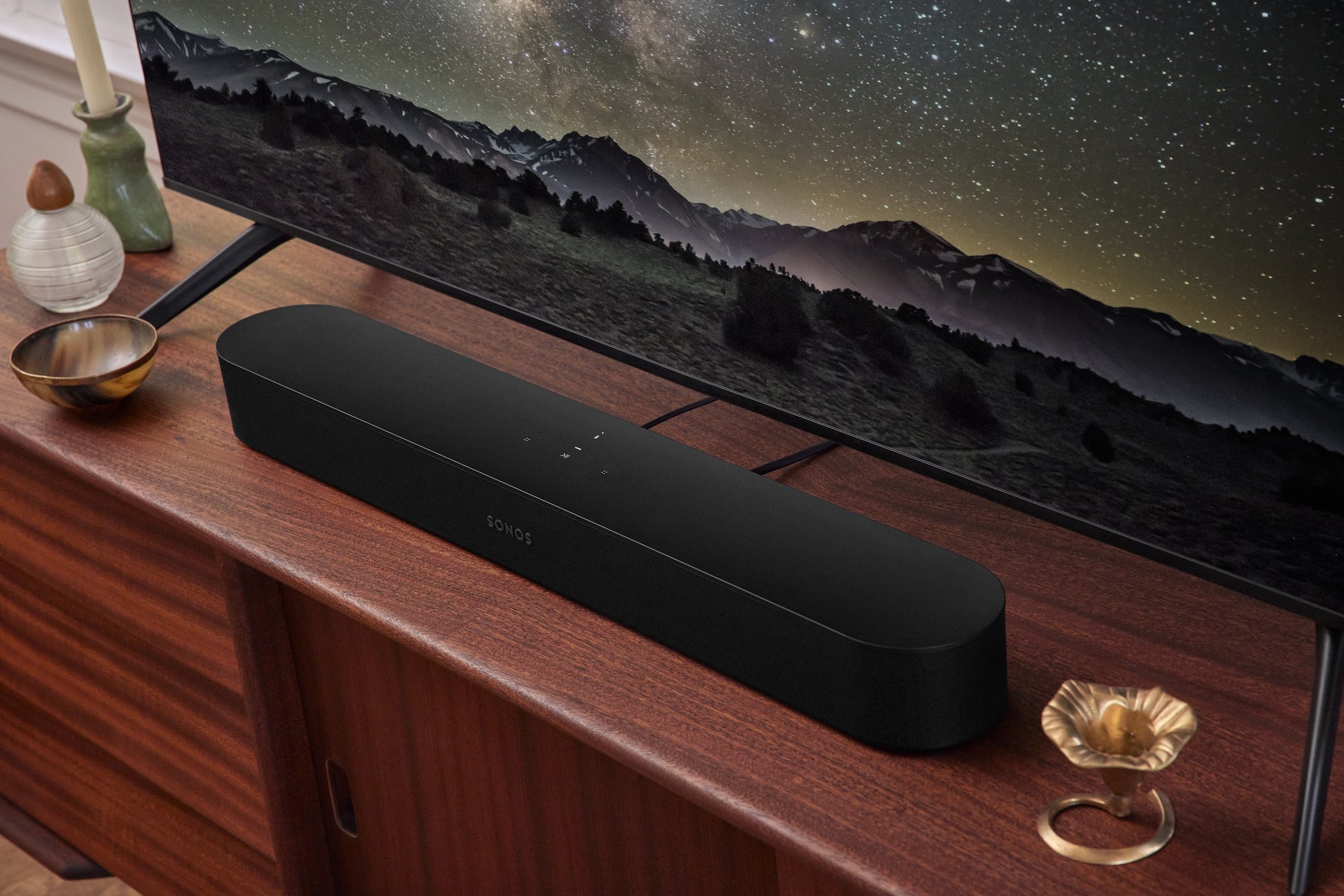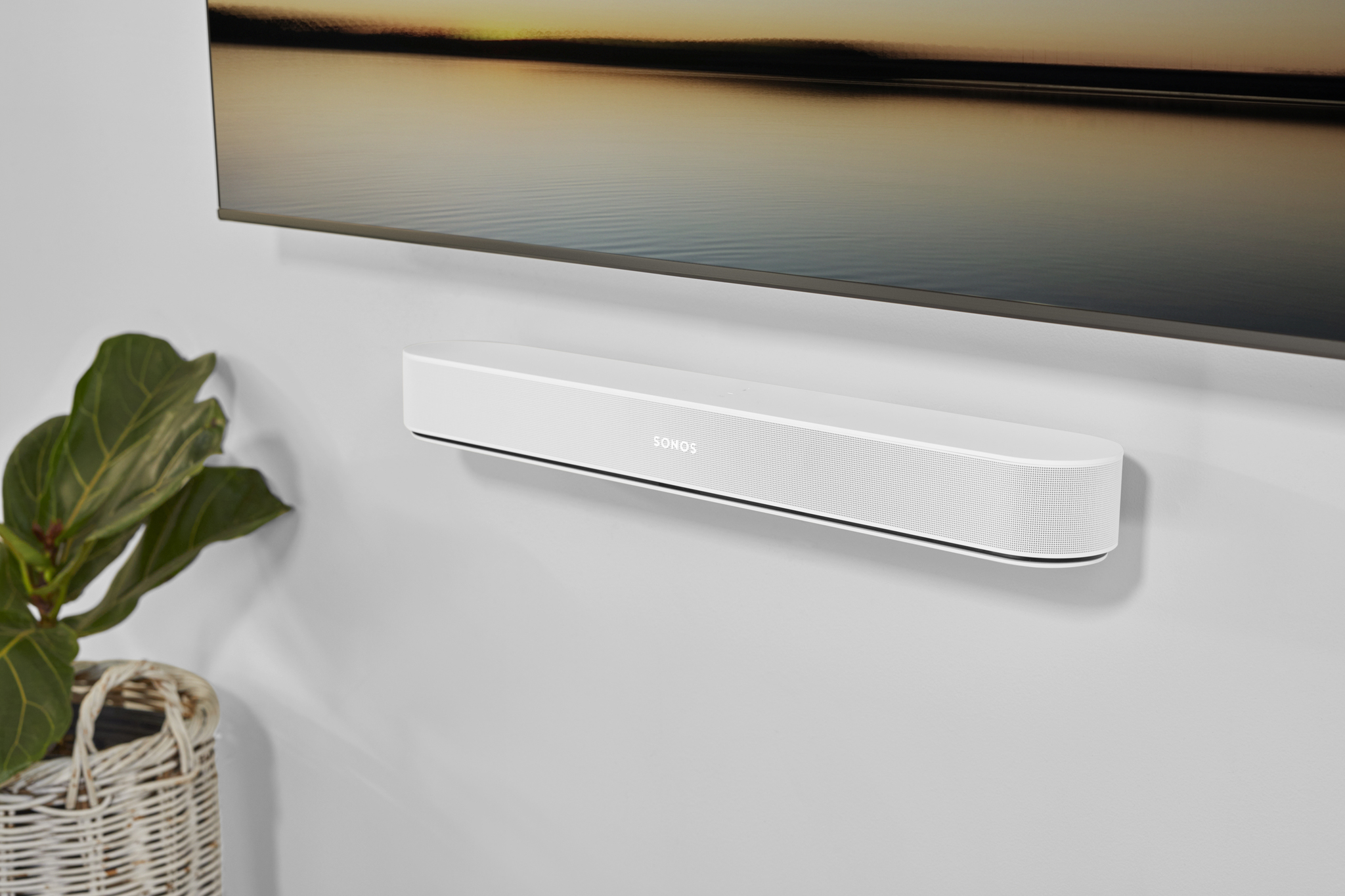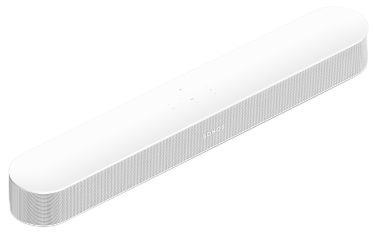It's been over three years since Sonos debuted its first modern soundbar aimed at small-to-medium sized rooms, and the industry has changed considerably since then. The Sonos Beam outperformed many competitors twice its size thanks to top-notch componentry and ample amplification, but it lacked the nascent Dolby Atmos support that has since become standard when connecting speakers to a television.
Now Sonos is correcting that with the Beam Gen 2, a modest upgrade that brings, in addition to Dolby Atmos (and therefore eARC compatibility), a faster processor, a slightly updated exterior, and a price bump to $449 USD over the original's $399. Last week, Sonos announced price hikes for all of its products as a result of the ongoing chip shortage.
In a conversation with Android Central, Sonos said that though the speaker array inside the enclosure is unchanged — there are still four mid-woofers, a center tweeter, and three passive radiators — the design has been updated to promote the two height channels that Dolby Atmos enables. The mesh enclosure that covers the original Beam, and collected a not-insignificant amount of dust, has also been swapped for a plastic one that should withstand long-term wear and tear a little more gracefully.
The actual dimensions of the second-gen Beam, which is still available in white and black, are basically identical to the original, and should accommodate most small televisions or wall-mounting situations (the company sells a separate mounting plate that's also been updated for the newer model).
While the Beam has since been supplanted by the Arc as Sonos's flagship soundbar, the second-gen model is picking up a couple of the Arc's other features, including NFC support for fast pairing, and a slightly updated design. eARC support brings true Dolby Atmos and TrueHD support through the port's wider bandwidth channel (Atmos is supported through ARC but does so by downsampling the signal, which diminishes quality).
The second-gen Beam also shares the same beamforming microphone setup as its predecessor, which means you can use Google Assistant or Alexa to play tracks from one of the many, many supported services.
As part of the Beam Gen 2's debut, Sonos is also announcing support for Amazon Music's Ultra HD Lossless tier, which offers streaming content at up to 24-bit/48Hz, and for the Arc and newest Beam (since they support eARC), support for Amazon's Atmos-powered spatial audio mixes. All products that support Sonos's S2 platform will offer Amazon Ultra HD support when it debuts later this year.
The Beam Gen 2 is coming October 5 for $449 USD / $559 CAD / £449 GBP/ €499 EUR/ $699 AUD.
Atmost
Sonos Beam (Gen 2)
After three years, Sonos is updating its Beam soundbar with Dolby Atmos, eARC support, and a faster processor to tie it all together.
Source: androidcentral


